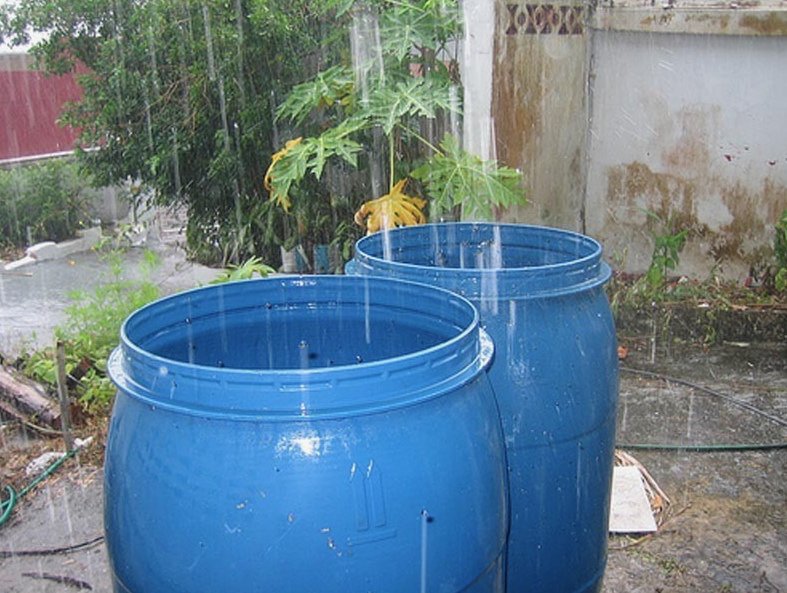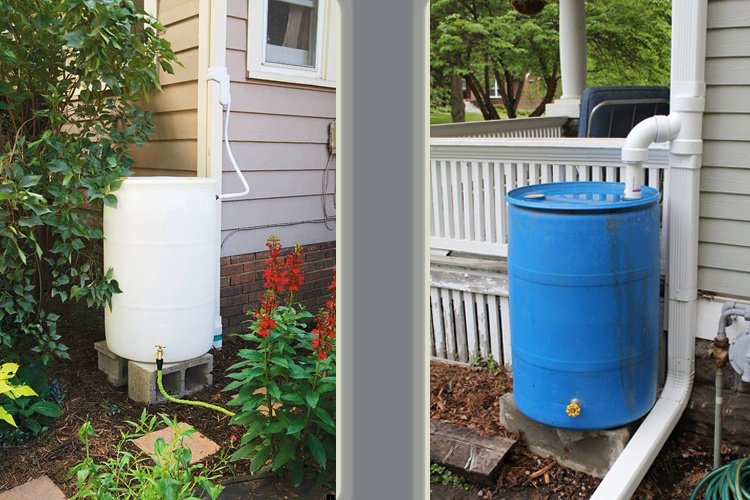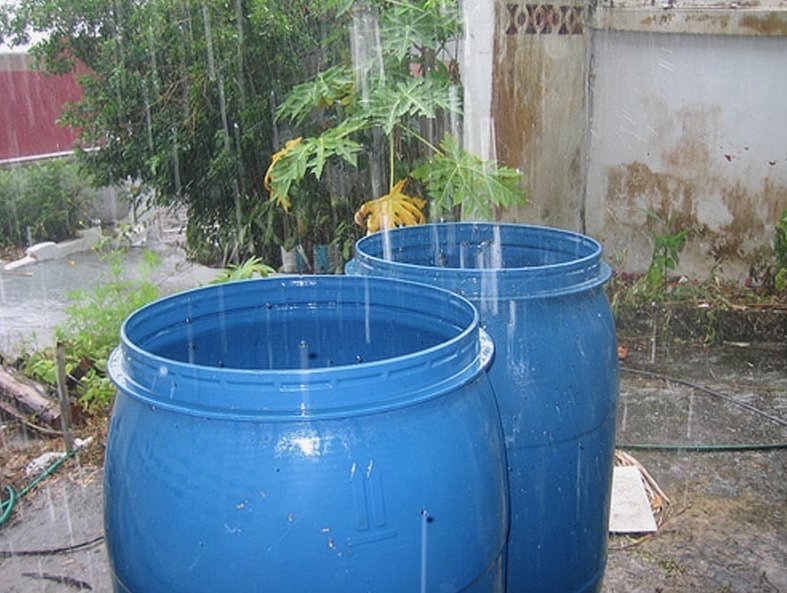Collecting rainwater is a fantastic way to make your garden more sustainable, reduce water bills, and protect the environment. However, there are common mistakes that many gardeners make when setting up a rainwater collection system. Avoiding these mistakes will ensure you have a clean and reliable water supply for your plants. Here are seven mistakes you should avoid when collecting rainwater for your garden.

### 1. **Using the Wrong Type of Container**
Choosing the right container is essential for effective rainwater collection. Some people use containers that are not meant for storing water, like old trash cans or poorly sealed bins. These can lead to contamination or leaks.
– **Solution:** Always use containers designed for rainwater collection, such as food-grade plastic barrels or dedicated rainwater tanks. They are durable, safe, and won’t contaminate the water.
As shown in the image, barrels and tanks are ideal for collecting and storing rainwater, as they are designed specifically for this purpose.
### 2. **Not Properly Filtering the Water**

Rainwater can collect debris, dirt, and even leaves from your roof and gutters, which may cause blockages or contaminate the water. Not using a proper filtration system means you may end up watering your garden with dirty water, which can harm your plants.
– **Solution:** Install mesh filters or gutter screens to catch leaves and debris before the water enters your collection system. Additionally, a first-flush diverter is a great way to divert the first rainwater runoff, which is often the dirtiest.
### 3. **Placing the Collection System in the Wrong Location**
The location where you place your rainwater collection system is critical. Many people place their barrels in areas that don’t get enough rainfall or aren’t positioned to capture runoff effectively.

– **Solution:** Place your rainwater collection system in an area where it can capture the most water, ideally under a downspout from your roof. Elevating the barrel can also help with water flow, allowing you to use gravity to irrigate your plants.
The image shows barrels positioned near downspouts and carefully placed to maximize water collection.
### 4. **Ignoring the Need for a Covered System**
An open barrel is an invitation for mosquitoes and algae growth. If your rainwater collection system is not covered, you may end up creating a breeding ground for insects or developing water that isn’t suitable for your plants.
– **Solution:** Always cover your rainwater collection containers with a lid or mesh netting to keep them clean and free of pests. This will also prevent debris from entering the water and will keep the water safe for your plants.
### 5. **Failing to Maintain the System Regularly**
Just like any other garden tool, rainwater collection systems require regular maintenance. Failing to clean gutters, filters, or containers can lead to clogs, mold, or inefficient water flow.
– **Solution:** Clean your system regularly. Ensure that gutters are free of debris, filters are intact, and the container is clean to avoid any buildup that could affect water quality.
### 6. **Using Untreated Rainwater for Sensitive Plants**
Not all plants in your garden are suited for rainwater irrigation, especially if the water has not been properly filtered or treated. Some plants, like those with sensitive root systems, can be damaged by the minerals or contaminants in unfiltered rainwater.
– **Solution:** Consider filtering rainwater before use, especially for sensitive plants. Alternatively, use the collected rainwater for less delicate plants or larger areas of the garden.
### 7. **Overfilling or Overusing Water Supply**
One of the most common mistakes is overfilling the collection system, causing spills or overflow. In some cases, people also use too much water too quickly, exhausting their supply before the next rainfall.
– **Solution:** Install an overflow valve to ensure that excess water is safely directed away. Also, ensure that you’re using your water wisely by setting up an irrigation system or watering only when needed.
Collecting rainwater is a wonderful way to reduce your environmental impact and create a more sustainable garden. However, by avoiding these common mistakes, you can ensure that your rainwater collection system is both efficient and effective. By using the right containers, maintaining your system, and taking the necessary precautions, you’ll have an excellent water source for your plants throughout the year.
Start using these tips to improve your rainwater collection system today, and watch your garden thrive with the power of nature’s own water
